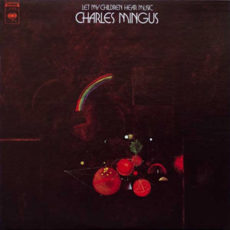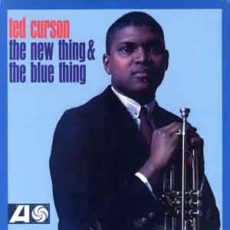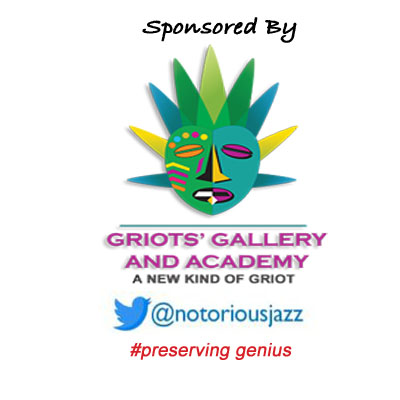
Daily Dose Of Jazz…
Krzysztof Komeda was born Krzysztof Trzciński on April 27, 1931 in Poznań, Poland and grew up in Częstochowa and Ostrów Wielkopolski. He took music lessons from early childhood and became a member of the Poznań conservatorium at the age of eight, but World War II thwarted his plans. He explored the theory of music, and learned to play piano during this period.
While attending the Liceum for Boys, where he graduated from in 1950, he participated in the Music and Poetry Club. After high school he entered the Medical Academy in Poznań to study medicine. He finished his six-year-long studies and obtained a medical doctor diploma in 1956. He chose to specialize as a head and neck surgeon.
Komeda was interested in light and dance music and met Witold Kujawski, a graduate of the same school and already a well-known swinging bass player. He introduced him to jazz and took him to Kraków where the romantic period of Polish jazz, called the catacombs, was in the spotlight. Jam sessions with famous musicians as Matuszkiewicz, Borowiec, Walasek, and Kujawski took place in Witold’s legendary small apartment in Kraków.
Fascinated with be-bop performed by Andrzej Trzaskowski, his fascination with jazz and the friendship with famous musicians strengthened his connections with the music. He worked for some time with the first, postwar, pioneer Polish jazz band called Melomani. Later, he played with various pop groups, a Dixieland band before turning his attention to modern jazz and the creation of the Komeda Sextet.
Trzciński used the stage name ‘Komeda’ for the first time to protect his medical profession from the scutiny of those of Polish society who regarded jazz as a cheap suspicious music of night clubs. The sextet became the first Polish jazz group playing modern jazz, and its pioneering performances opened the way for jazz in Poland. He played jazz that related to European traditions and which was the synthesis of the two most popular groups at that time: The Modern Jazz Quartet and the Gerry Mulligan Quartet.
He would go on to tour Moscow, Grenoble, Paris, Copenhagen, Stockholm, Prague, Blend, Koenigsberg, Bulgaria and both West and East Germany. He was a part of a show called Jazz and Poetry, began scoring films and overall, Komeda composed more than 70 soundtracks. While staying in Los Angeles, California in 1968 he composed the film music for Roman Polanski’s Rosemary’s Baby and Kulik’s The Riot.
In 1968, in Los Angeles, while having a friendly rough-and-tumble with writer Marek Hłasko he was pushed over an escarpment and suffered a haematoma of the brain. Medical treatment in the US hospital did not save his life. After being transported home to Poland in a coma and in a terminal state. Pianst Krzysztof Komeda, who is credited with creating an original style, often described as the Polish school of jazz, hung on until passing away on April 23, 1969 at the age of 37.
More Posts: bandleader,composer,history,instrumental,jazz,music,piano

Daily Dose Of Jazz…
Sy Johnson was born on April 15, 1930 in New Haven, Connecticut and learned to play the piano in his youth. He first performed in New York City with Charles Mingus at the jazz club Showplace, with Booker Ervin on tenor, Ted Curson on trumpet, Dannie Richmond on drums, and Mingus on bass. and on his first night with Mingus, Eric Dolphy performed on alto, bass clarinet, and flute.
In 1971, eleven years later, Mingus gave Johnson Let My Children Hear Music to arrange, which featured two Mingus pieces, Shoes of the Fisherman’s Wife (Are Some Jiveass Slippers) and Don’t Be Afraid, the Clowns Afraid Too. The album’s emergence was heralded with a live concert, Mingus And Friends At Philharmonic Hall, also arranged by Johnson and released as an album.
Performing We Did It on Soul Train in 1973 and continued to work with Mingus until his death from Lou Gehrig’s disease in 1979. Mingus recorded two of Johnson’s compositions, Wee and For Harry Carney, and nominated Johnson for a Guggenheim award following his own in Jazz Composition.
Johnson continues to work with Sue Mingus arranging charts for all the Mingus repertory ensembles—the Mingus Big Band, the Mingus Orchestra and the Mingus Dynasty. He would go on to collaborate with arrangements for Joe Williams, Frank Sinatra, Wes Montgomery, Roy Eldridge, Ben Webster, Quincy Jones, Benny Goodman, Count Basie, Mel Torme, Terry Gibbs, Lee Konitz and Sarah Vaughan, among others.
He has also worked on Broadway and in films such as the1984 movie The Cotton Club. Arranger Sy Johnson is also a jazz photographer, writer, pianist, singer, and teacher.
More Posts: arranger,history,instrumental,jazz,music,photographer,pianist,singer,teacher,writer

Daily Dose Of Jazz…
David Burns was born on March 24, 1924 in Perth Amboy, New Jersey and began playing trumpet when he was nine years old. As a teenager, he heard bebop performances at Minton’s Playhouse, among others Dizzy Gillespie. His first ensemble was in Al Cooper’s Savoy Sultans, with whom he played from 1941 to 1943, prior to joining the Army Air Force. There he led a band from 1943 to 1945 that included James Moody as a sideman.
He joined Gillespie’s band in 1946 and appeared with Gillespie in Jivin’ in Bebop in 1947. After leaving Gillespie’s band in 1949, he worked with Duke Ellington from 1950 to 1952 and then with James Moody until 1957.
The late 1950s saw Dave playing shows in New York City and in the Sixties recorded for Vanguard Records. He worked with Billy Mitchell, Al Grey, Willie Bobo, Art Taylor, Dexter Gordon, Johnny Griffin, Leo Parker, and Milt Jackson. From the 1970s through the end of his career he increased his work as an educator. Trumpeter, flugelhornist, arranger, composer, and teacher Dave Burns passed away on April 5, 2009 in Freeport, New York.
More Posts: arranger,composer,educator,flugelhorn,history,instrumental,jazz,music,trumpet

Daily Dose Of Jazz…
Lenny Tristano was born Leonard Joseph Tristano on March 19, 1919 in Chicago, Illinois, the second of four brothers. He started on the family’s player piano at the age of two or three. He had classical piano lessons when he was eight, Born with weak eyesight, and then with measles, by the age of nine or ten, he was totally blind. He attended the Illinois School for the Blind in Jacksonville, Florida for a decade around 1928. During his school days, he played several other instruments, including trumpet, guitar, saxophones, and drums and by eleven, he had his first gigs, playing clarinet in a brothel.
Back in Chicago, Tristano got his bachelor’s degree in music from the American Conservatory of Music but left before completing his master’s degree, moving to New York City in 1946. He played saxophone and piano with leading bebop musicians, Charlie Parker, Dizzy Gillespie, and Max Roach among others. He formed his own small bands, which soon displayed some of his early interests – contrapuntal interaction of instruments, harmonic flexibility, and rhythmic complexity. His 1949 quintet recorded the first free group improvisations, that continued in 1951, with the first overdubbed, improvised jazz recordings.
He started teaching music, with an emphasis on improvisation, in the early 1940s, and by the mid-1950s was concentrating on teaching instead of performing. He taught in a structured and disciplined manner, which was unusual in jazz education when he began. His educational role over three decades meant that he exerted an influence on jazz through his students, including saxophonists Lee Konitz and Warne Marsh.
Through the Fifties to the Sixties he would go on to record for the New Jazz label which would become Prestige Records, and Atlantic Records, he founded his own label Jazz Records, create his own recording studio, tour throughout Europe, played A Journey Through Jazz, a five-week engagement at Birdland, s well as other New York City jazz haunts. His last public performance in the United States was in 1968 but continued teaching into the Seventies.
Having a series of illnesses in the 1970s, including eye pain and emphysema from smoking for most of his life, on November 18, 1978 pianist, composer, arranger, and jazz improvisation educator Lennie Tristano passed away from a heart attack at home in Jamaica, New York.
More Posts: bandleader,clarinet,drums,history,instrumental,jazz,music,piano,saxophone

Daily Dose Of Jazz…
Herb Bushler was born March 7, 1939 in New York City and played piano and tuba in his youth before picking up double bass. Classically trained in bass he has performed with symphony orchestras in this capacity. In 1966 he began a longtime association with ballet and film composer Coleridge-Taylor Perkinson.
He worked extensively in jazz idioms in the 1960s and 1970s, including David Amram, Ted Curson, Blossom Dearie, Tony Williams, and Paul Winter. He first played with Gil Evans in 1967, an association that would continue on and off until 1981.
Other work during the 1970s included sessions with Enrico Rava, Joe Farrell, Ryo Kawasaki, David Sanborn, and Harold Vick. He played with The Fifth Dimension in the 1960s and has also worked with Dee Dee Bridgewater, Billy Harper, Les McCann, Joe Chambers, and Howard Johnson. Bassist Herb Bushler, never recording as a leader, continues to perform and record utilizing both double bass and electric bass.
More Posts: bandleader,bass,history,instrumental,jazz,music,tuba



